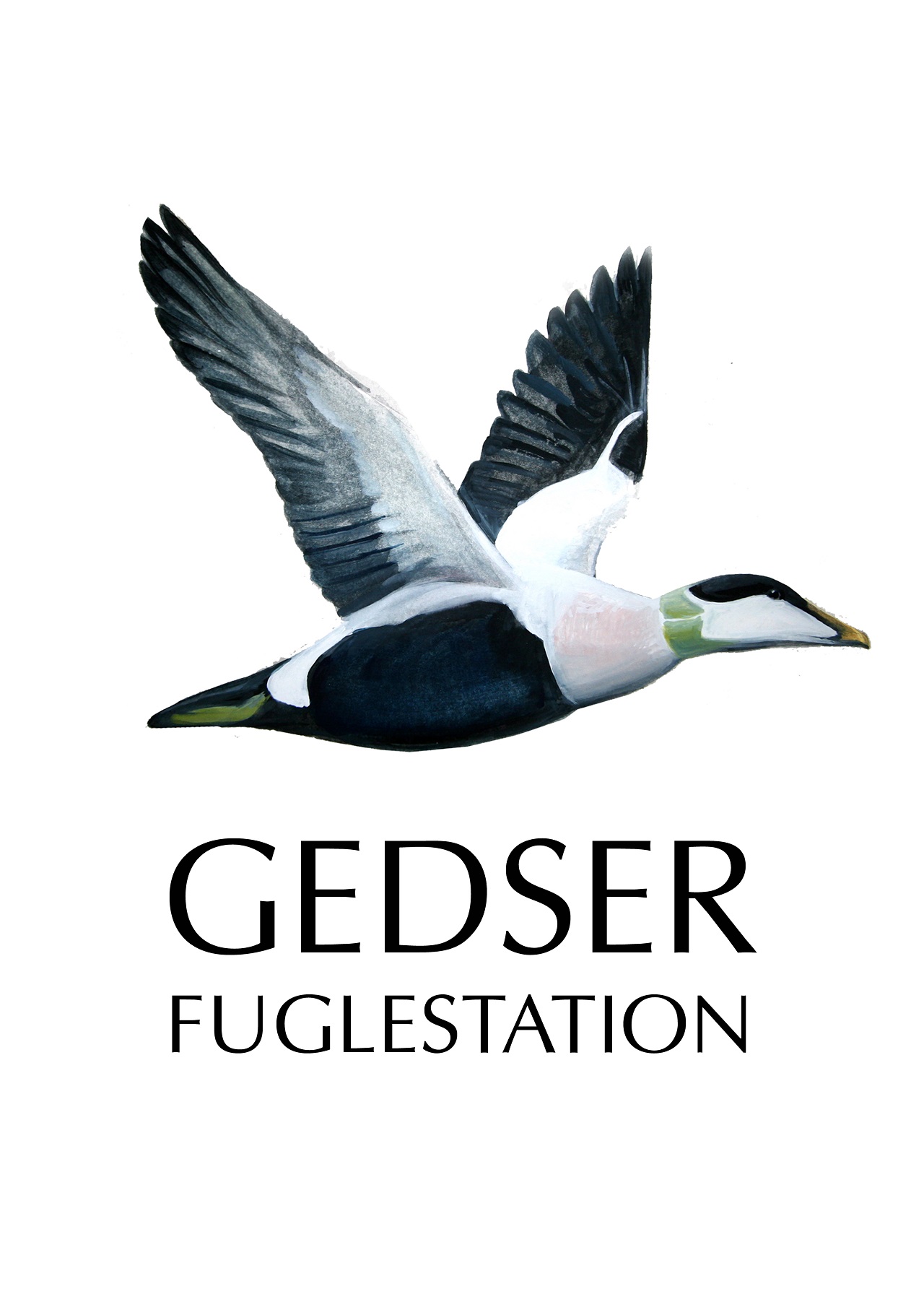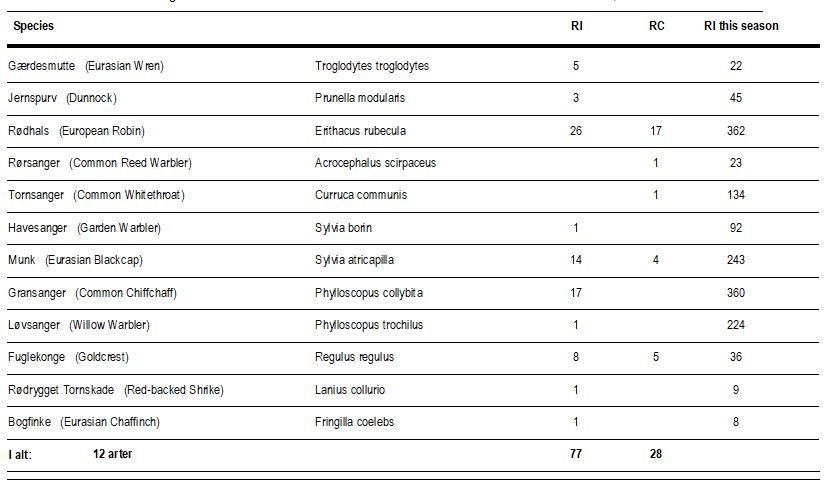Gedser Fuglestation Blog
Her på Gedser Fuglestations blog bringes korte nyheder i dagbogsformat om hændelser på fuglestationen.
A little problem with a red-backed Shrike
Today we caught a Red-backed Shrike (Rødrygget Tonskade). I always check the books when catching something less common, so I will not make a mistake. In this case I used the Identification guide to birds in the hand of Laurent Demongin. And by comparing the wing formula I was a bit confused. The wing formula was pointing to Lanius senator (Woodchat Shrike). See the wing formula in the picture and compare it with the picture of the book. P2 is certainly much smaller than P3 and P4 and slightly shorter than P5. Did I catch a senator? No probably not. The T6 outer tail feather should have a broad pale tip for senator but only a narrow whitish edge for collurio (the Red-backed Shrike) and that was not the case. Overall, we decided that we had a Red-backed instead of a Woodchat.
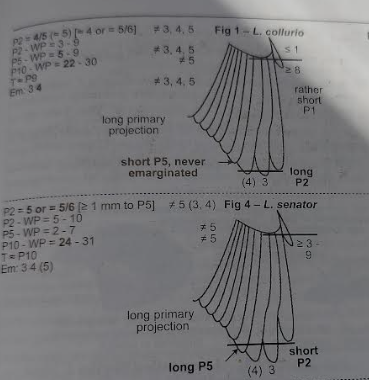
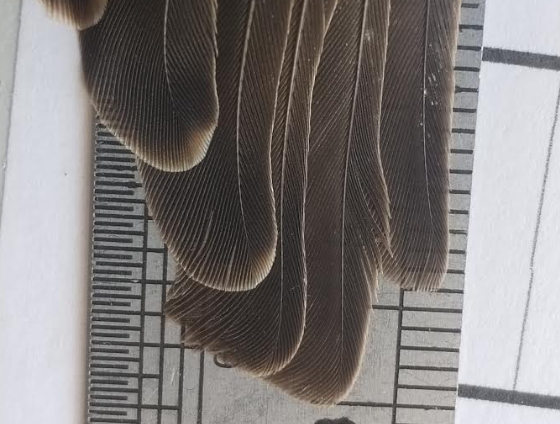
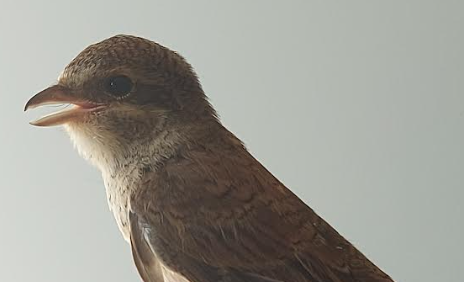

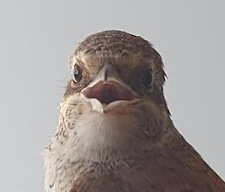
We had 22 species of moth (see table) and only 1 new one. It is a very strange looking moth when it is not flying. It is called the Chinese Character (Silkevinge, see picture).
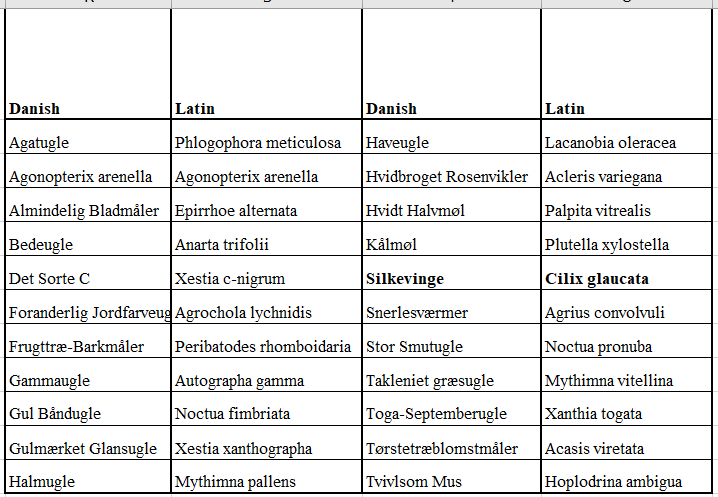
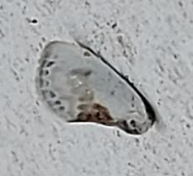
Migration Counts at Gedser Odde
by Lara W
A slightly slower day today in terms of numbers, and yet quite a bit of excitement closer to home! But more on that in a moment…the highest number spot was once again claimed by the Common Eider/Ederfugl (Somateria mollissima), with 1035 individuals passing the point. Although sunny, there was quite a haze over the sea which may have impacted visibility. As it was, only 170 Wigeon/Pibeand (Anas Penelope) and 50 Common scoter/Sortand (Melanitta nigra) were counted, which over the last few days have been spotted migrating into the hundreds. Coming in mixed flocks, 10 Pintail/Spidsand (Anas acuta), 27 Teal/Krikand (Anas crecca), and 4 Shoveler/Skeand (Anas clypeata) were also seen, along with 9 Red-breasted Merganser/ Toppet Skallesluger (Mergus serrator). Other seabirds passing included 14 Sandwich tern/Splitterne (Thalasseus sandvicensis), 8 Little gull/Dværgmåge (Hydrocoloeus minutus), 1 Common tern/Fjordterne (Sterna hirundo), and 7 Velvet Scoter/Fløjlsand (Melannita fusca).
Flying out from behind us were a variety of near-passerines and raptors, including 15 Stock Dove/Huldue (Columba oenas), 2 Hen Harrier/Blå Kærhøg (Circus cyaneus), 4 Kestrel/Tårnfalk (Falco tinnunculus), a Merlin/Dværgfalk (Falco columbarius), and 38 Sparrowhawk/Spurvehøg (Accipiter nisus). Two events had us all in real excitement – the return of the Nutcracker/Nøddekrige (Nucifraga caryocatactes), and a juvenile skua which stayed grounded on the field for at least two hours. Addressing the nutcracker first – we believe this to be the same individual that has been returning to the area around the fuglestation for the last 6 weeks. This was confirmed when Mads Elley spotted the bird had been ringmarked when it (finally) perched on a nearby tree. As before, the bird approached the cliffs several times, only to turn back at the last moment. Theories are flying about as to why a bird, which is known not to migrate until mid-October, would be instigating such behaviour, but as yet, nothing is confirmed. Feel free to comment your thoughts!
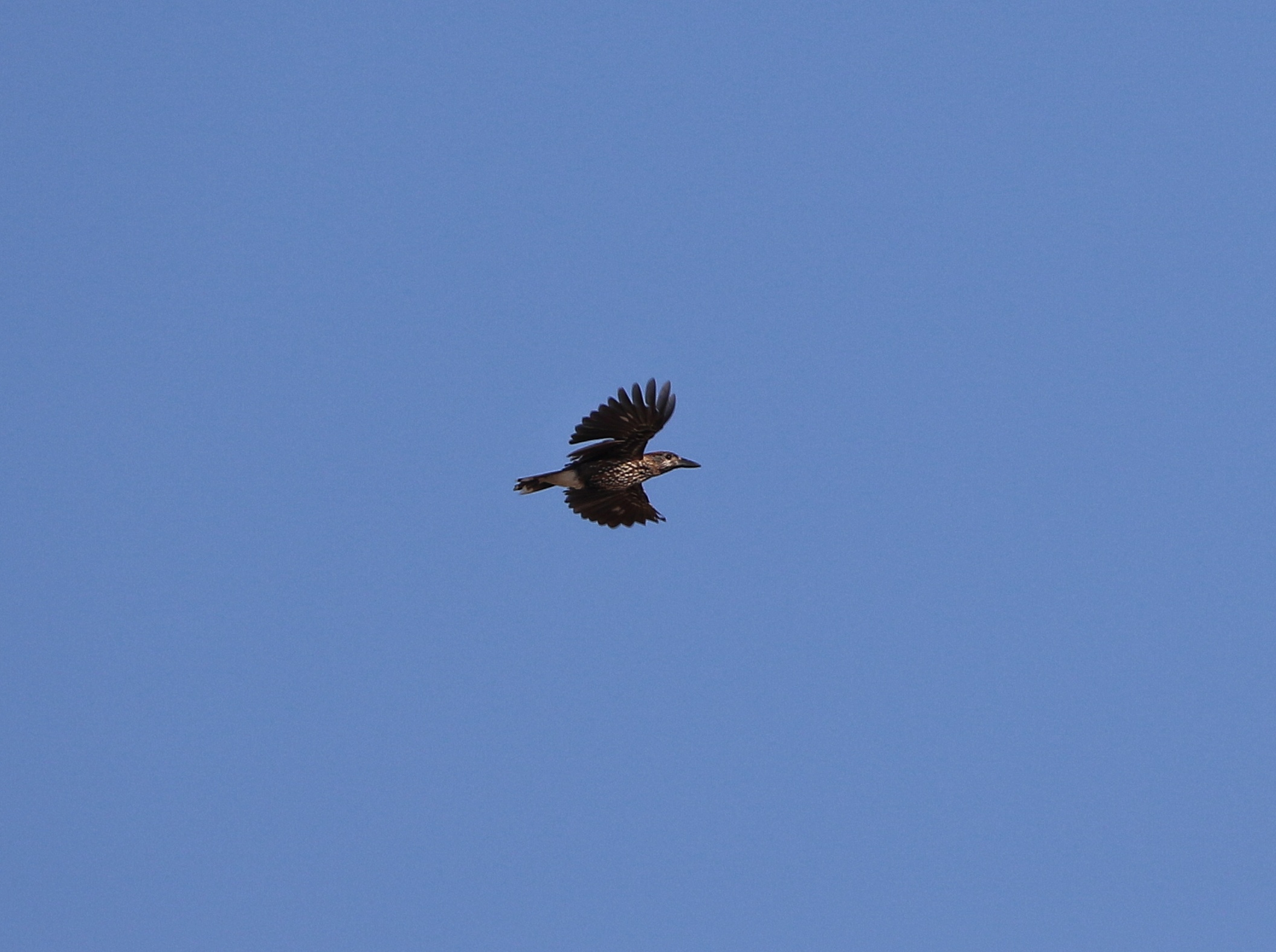
The skua which elicited such attention lay grounded for some time in the fields, preening, and eventually flushed by a passing Red Kite/Rød Glente (Milvus milvus). Some conversation was held over the correct identification of the bird, as it exhibited features of both long-tailed and arctic, but eventually, the long-tailed/Lille Kjove (Stercorarius longicaudus) crew bore out. Whatever the case, it was an absolutely stunning bird to get up close and personal with.
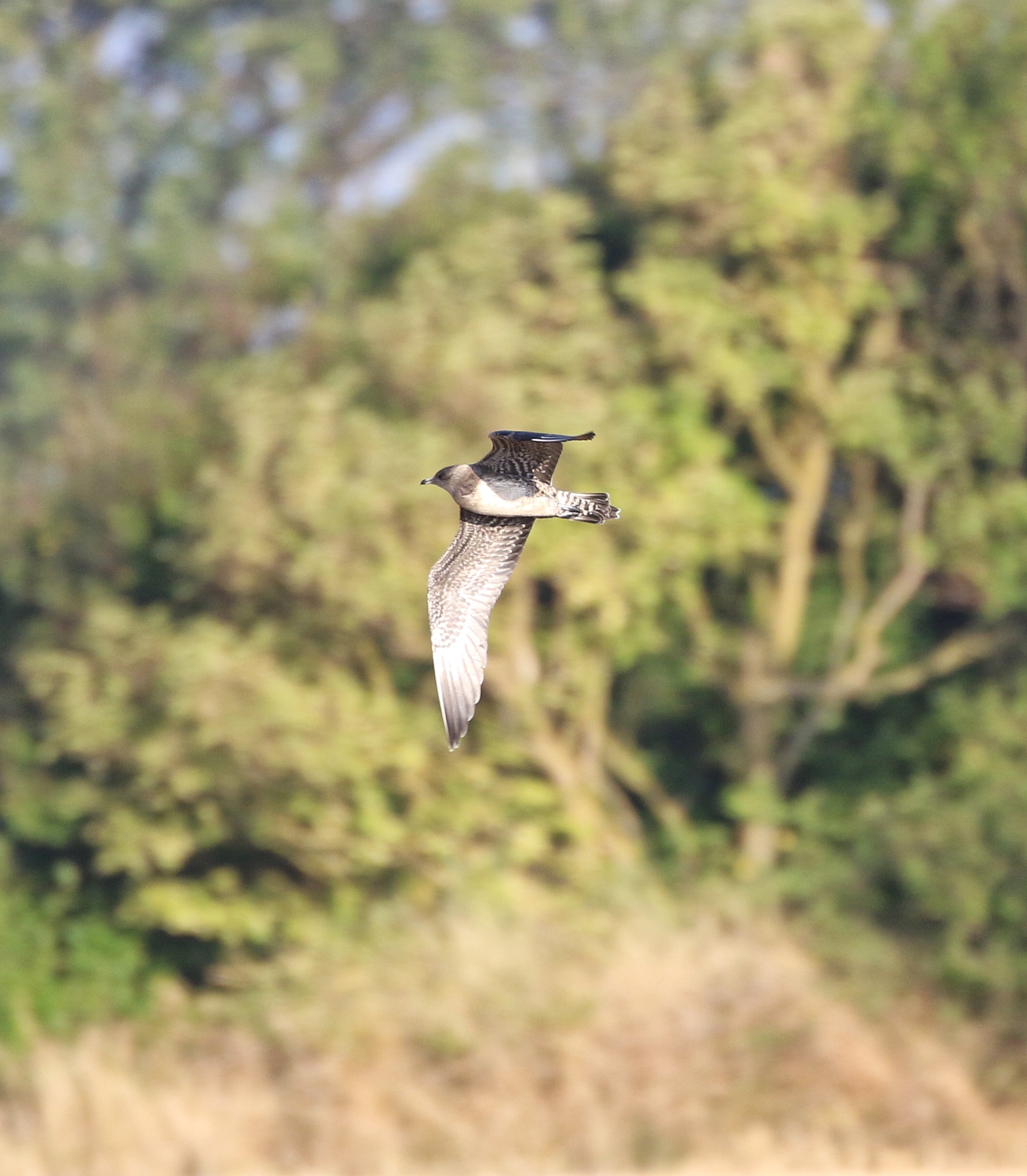
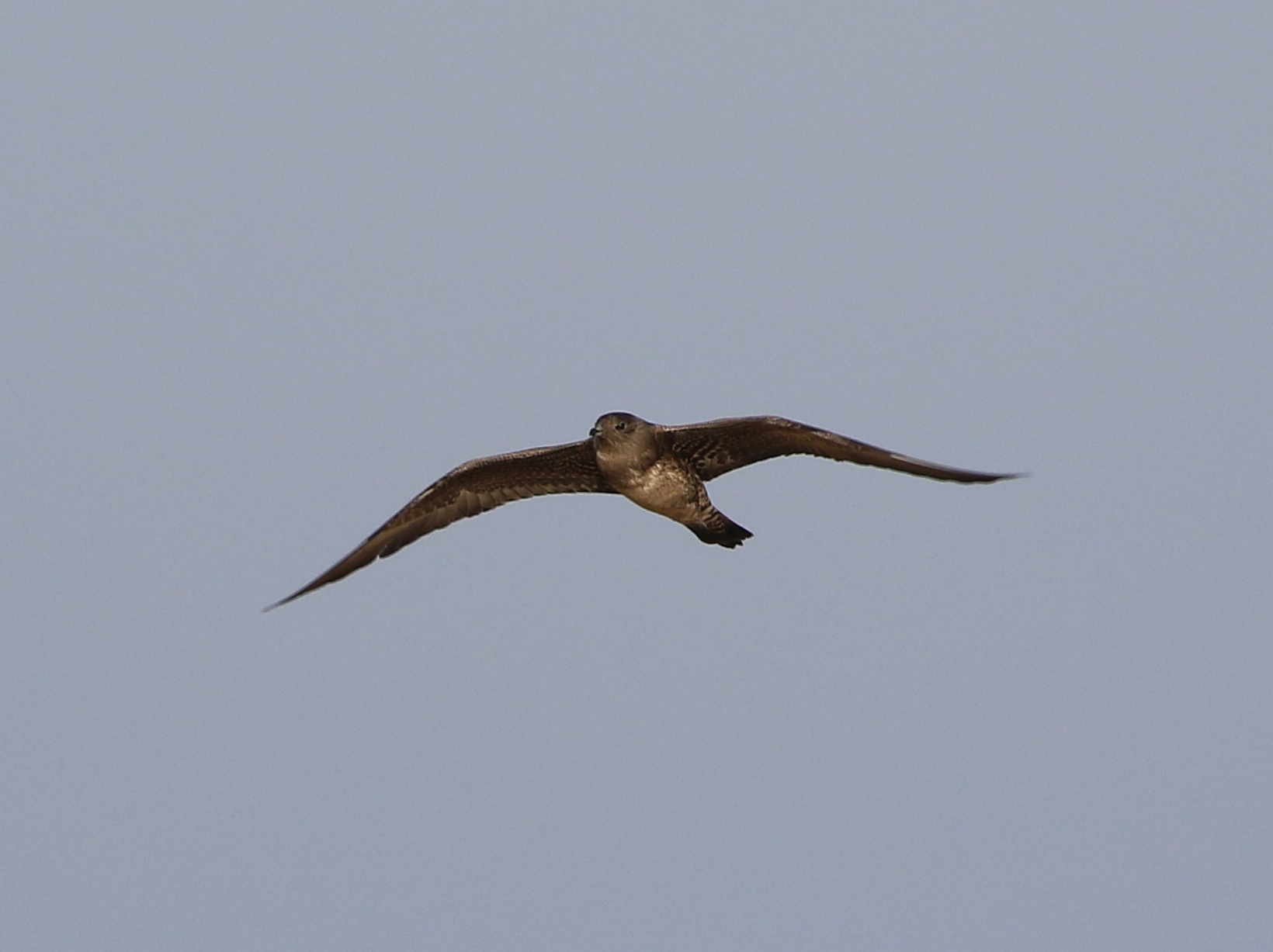
Photo credits: Lara W
In terms of passerines, we had similar species migrating as before, including 13 Swallow/Landsvale (Hirundo rustica, 2 House martin/Bysvale (Delichon urbicum), 132 White wagtail/Hvid Vipstjert (Motacilla alba), 42 Chaffinch/Bogfinke (Fringilla coelebs), and 29 Linnet/Tornirisk (Linaria cannabina).
In other news, DOF UNG group (Danish Ornithological Youth Group) is visiting this weekend, as part of planning their annual activities to encourage younger people to become engaged in nature. This weekend, 11 people will be participating in both the migratory counts and ring marking. Several within the group already hold a ringing licence and have visited Gedser Fuglestation before, so will be able to help teach others without such experience. The group will also be taking the time to not only soak up the relaxed atmosphere in Gedser, but also plan the next year’s activities.
At the station: Hanelie Sidhu, Robert Luttik, Lara Winsloe and Larissa Britton
